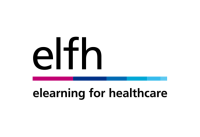Anaesthesia | Paediatrics | Inhalational Induction



Inhalational Induction
Session Overview
Description
This session describes the standard management of inhalation induction of anaesthesia in infants and children who are ASA 1 or 2. Children of all ages may need to have anaesthesia induced by the inhalational method. This session also covers definitions, indications, contraindications, standard techniques and hazards.
Learning Objectives
By the end of this session you will be able to:
- Define the terms unconsciousness and inhalation induction
- State indications for inhalation induction
- State the main contraindications of inhalational induction
- State common administration techniques of inhalation induction
- Identify the main causes and remedies of airway obstruction and cardiorespiratory depression
Prerequisites
Before commencing this session you should complete the following:
- Module 01/Basic Science/Pharmacology essentials/Inhalational anaesthetic agents (001-0014)
- Module 01/Airway Care/Airway assessment/Prediction of difficult airway (001-0030)
- Module 01/Airway Care/Airway assessment/Airway obstruction (001-0031)
- Module 01/Principles of Anaesthesia/Choice of anaesthetic technique/Airway choice (001-0041)
- Module 01/Equipment Essentials/Introduction to breathing systems/Common breathing sytems (001-0063)
- Module 01/Equipment Essentials/Introduction to breathing systems/Breathing system components (001-0062)
Inhalational induction is defined as the process used to achieve unconsciousness in patients using an inhalational drug.
Unconsciousness may be defined variously, as loss of response to verbal command, loss of eyelash reflex or lack of motor response to painful stimulus.
Generally, induction progresses to maintenance of anaesthesia, when the patient is sufficiently anaesthetized to either accommodate an airway device or remain immobile for the intended procedure.
- Anaesthesia | e-LA Learning Path: Edinburgh Medica...
- Posted By eIntegrity Healthcare e-Learning
- Posted Date: 2025-02-05
- Location:Online
- This session will cover the assessment and treatment of post-operative pain and management of early post-operative nausea and vomiting (PONV).
- Anaesthesia | e-LA Learning Path: Edinburgh Medica...
- Posted By eIntegrity Healthcare e-Learning
- Posted Date: 2025-02-05
- Location:Online
- This session illustrates the importance of effective airway maintenance in the recovery room, why oxygen therapy is required and how it can be safely and effectively administered.
- Anaesthesia | e-LA Learning Path: Edinburgh Medica...
- Posted By eIntegrity Healthcare e-Learning
- Posted Date: 2025-02-05
- Location:Online
- This session describes the function of a recovery facility, the most common problems likely to be encountered in post-operative patients, and makes suggestions for the management of these problems.
- Anaesthesia | e-LA Learning Path: Edinburgh Medica...
- Posted By eIntegrity Healthcare e-Learning
- Posted Date: 2025-02-05
- Location:Online
- This session outlines the basic definitions of local and regional anaesthesia (LA and RA), and advises when to use each as a sole technique and when to use in combination with general anaesthesia (GA). It also covers consent issues, minimal safety standar
- Acute Medicine | Palliative care | Non-drug interv...
- Posted By eIntegrity Healthcare e-Learning
- Posted Date: 2025-02-04
- Location:Online
- This session outlines a variety of non-drug interventions which may be used in an integrated approach to symptom management and enhance quality of life in end of life care. This session was reviewed by Louise Free and Richard Kitchen and last updated in F




